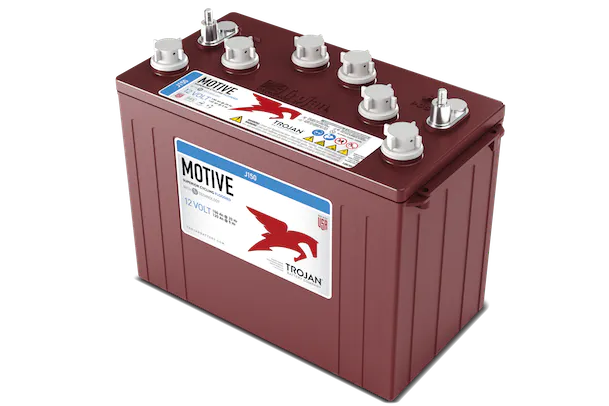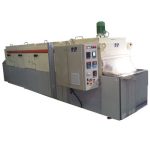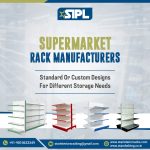Batteries are used in various industries for many reasons, and the demand for rechargeable batteries is expected to increase in the future. Among all rechargeable batteries or lead-acid batteries, flooded batteries are considered to be popular and traditional ones. These batteries are used in a wide range of industries, including automotive, backup power solutions, industrial, marine applications, renewable energy systems, and more. This post is a comprehensive guide to give you in-depth knowledge of flooded batteries. We have discussed about flooded batteries, their applications, battery construction, benefits, etc.
If you’re looking to buy flooded batteries for your industry application, then you must follow this blog. It covers all important aspects that one should know before buying flooded batteries.
What are Flooded Batteries and their Construction?
A flooded or wet cell battery is a traditional lead-acid battery known for its versatile features, high-energy capacity, and cost-effectiveness. This battery is called flooded or wet because it contains excess liquid electrolytes solution (a mixture of water and sulfuric acid) and submerges the lead plates.
Construction
A flooded battery is manufactured by immersing two lead plates (a cathode and an anode) in an electrolyte solution (a mixture of 65% of water and 35% of sulfuric acid). These lead plates are made of lead and lead dioxide. A plate separator is used between these two plates to prevent them from touching each other.
How do they Charge and Discharge?
Charging: When an external electrical charge flows through the battery, an electrochemical reaction occurs between the lead plates and electrolyte solution, which is further stored as electrical energy in the battery. This way flooded battery is charged.
Discharging: When the flooded battery is in use and supply stored electric energy to any device or system, then chemical reactions takes place, and the lead sulfate is converted back into lead and lead dioxide releasing electrical energy.
Despite having different types of batteries in the market, wet cell batteries are the most widely used, and their demand will always continue. But this battery has some pros and cons too, which you should know before you plan to buy this battery.
Flooded Batteries Pros and Cons
Pros:
- Affordable
When compared with other type of batteries, the cost of flooded batteries are relatively low.
- High Energy Capacity
A flooded battery has the capacity to store high amount of energy even if the battery size is small, making them suitable for applications that require power supplies for a longer time, such as renewable energy systems or backup power systems.
- Easy Maintenance
Flooded Batteries require proper care and attention to extend battery life and performance. But its maintenance is simple and easy as all you have to do is check the water level regularly and add distilled water to replenish the level of electrolytes. If you don’t, lead plates will start to corrode when exposed to the atmosphere.
Cons:
- Requires Frequent Maintenance
This battery requires regular monitoring and maintenance to extend its battery life and better performance. If not maintained properly, this may result in an explosion or damage to the battery.
- Heavy and Bulky
When compared with the latest battery technologies, such as lithium-ion batteries, flood batteries are bulky and heavy, making them unsuitable for portable use.
- Risk of Acid Leaks
Usually, flooded batteries are not sealed, so there is a risk of spillage and leakage of electrolytes containing sulfuric acid if not handled properly.
Despite these disadvantages, flooded batteries are still popular in various industries’ applications due to their affordability, proven technology, and reliability in specific use cases. You can explore here how flooded batteries are used in industries like marine, automotive, industrial, renewable energy systems, etc.
Applications of Flooded or Wet Cell Battery:
- Marine Industry
In the marine industry, wet cell batteries are used for various purposes, such as trolling motors and starting batteries to supply power to boat engines. In addition, these types of batteries are used as deep-cycle batteries to supply steady power to ship for electrical systems, lights, and accessories.
- Automotive Industry
Flooded batteries are used in automotive industries as starter batteries. With the help of these batteries, cars or motors get the power required to start or ignite the engine.
- Renewable Energy Systems
In renewable energy systems, such as wind and solar systems, flooded batteries are used to generate sufficient power for installations. These batteries help in providing a constant supply of electricity and ensure continuous operation even when renewable energy sources are not installed.
Conclusion:
There is no doubt that many new latest types of batteries are available in the market, like sealed lead-acid (SLA) batteries and lithium-ion batteries, but the popularity of flooded batteries has not decreased. It is believed that the demand for flooded batteries continues to grow because of easy maintenance, higher energy efficiency, powerful performance, and cost-effectiveness. This comprehensive guide about flooded batteries will definitely help you decide how flooded batteries are good choice for your industrial applications.




